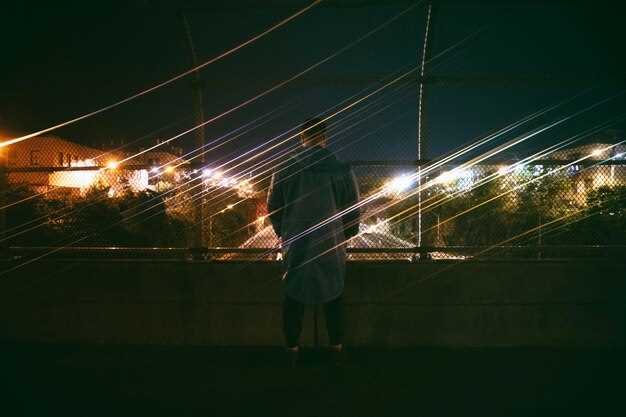
The trend of using underglow lighting on vehicles has gained significant popularity among car enthusiasts and casual drivers alike. This aesthetic enhancement involves the installation of lights underneath the vehicle, creating a visually striking effect, especially at night. However, as this practice becomes more widespread, questions regarding its legality have surfaced. Understanding whether underglow lighting is permitted on public roads is essential for avoiding potential fines or penalties.
Legal regulations surrounding underglow lighting vary significantly from one jurisdiction to another. In some regions, certain colors and types of lighting are strictly prohibited, while others may allow specific hues or configurations. For instance, in many states in the U.S., the use of blue or red lights on a vehicle is often restricted due to their association with emergency vehicles. This underscores the necessity for vehicle owners to familiarize themselves with local laws before considering underglow as part of their vehicle’s design.
Furthermore, compliance with state laws is just one aspect to consider. Various municipalities may have their own regulations regarding vehicle modifications, including underglow lighting. Additionally, some areas may require vehicles to adhere to safety standards that dictate how and when these lights can be used. By conducting thorough research and potentially consulting legal resources, vehicle owners can make informed decisions about enhancing their cars with underglow lighting while remaining within legal boundaries.
Understanding State Regulations on Underglow Lighting
Underglow lighting, commonly referred to as neon lights or accent lights, has gained popularity among vehicle enthusiasts for its aesthetic appeal. However, the legality of using such lighting varies significantly across different states in the U.S. It is essential for vehicle owners to familiarize themselves with their state’s regulations to avoid potential fines or legal issues.
Many states have specific laws regarding the use of colored lights on vehicles. Generally, regulations focus on colors that can distract or mislead other drivers. For instance, red and blue lights are typically reserved for emergency vehicles, and using them on personal cars can lead to penalties. States may allow certain colors like white or green, but the context of their use is crucial.
Some states permit undeglow lighting as long as it is not visible from the front of the vehicle, effectively minimizing distractions to other drivers. Others may require that the lights be turned off when the vehicle is in motion, ensuring they do not interfere with traffic safety. Additionally, regulations may stipulate that the lights cannot flash or change in a way that imitates emergency vehicles.
In certain jurisdictions, permits may be required for the installation of such lighting. It is advisable to check with local law enforcement or the Department of Motor Vehicles (DMV) for precise guidelines. Understanding these regulations not only ensures compliance but also fosters responsible vehicle customization.
In summary, while underglow lighting can enhance a vehicle’s appearance, understanding and adhering to state regulations is crucial. Vehicle owners should stay informed about the specific laws in their area to ensure they enjoy their modifications legally and safely.
Requirements for Compliance with Vehicle Safety Standards

When installing underglow lighting on a vehicle, it is crucial to adhere to specific safety standards and regulations to ensure that the modifications do not compromise vehicle safety or legality. The primary requirements typically include the color of the lights, their visibility, and their placement.
First, most jurisdictions require that underglow lights must not emit colors that are designated for use by emergency vehicles, such as red and blue lights. Some regions may also restrict other colors or combinations that could confuse other drivers or imitate official vehicles.
Second, the lighting must not obstruct the visibility of standard vehicle lighting, including turn signals, brake lights, or headlights. Underglow lights should enhance the vehicle’s visibility without interfering with its functionality, ensuring that other road users can clearly see the vehicle’s intentions.
Additionally, any underglow installation should comply with specific placement guidelines. Lights must be installed in a way that prevents them from being a distraction to other drivers. Typically, this means avoiding over-brightness or excessive glare, as this can create hazardous driving conditions.
Some states and localities require that underglow lighting be equipped with an automatic shut-off mechanism to ensure that lights are not activated while driving in certain conditions, such as when the vehicle is being operated on public roads. Furthermore, it is often necessary to ensure that the lights are weather-resistant and securely mounted to avoid detachment while in motion.
Compliance with vehicle safety standards can vary greatly between regions, so it is essential for vehicle owners to research local laws and regulations regarding underglow lighting. Consulting with legal experts or local law enforcement can provide further clarification on what is permissible to avoid fines or penalties.
Consequences of Using Underglow Lighting Illegally

Using underglow lighting on your vehicle without adhering to local regulations can lead to several negative outcomes. Firstly, it may result in legal penalties. Many jurisdictions classify unauthorized underglow as a violation of vehicle lighting laws. This can lead to fines, which vary significantly depending on the state or locality.
In addition to fines, law enforcement may issue citations or even require the removal of the lights. Repeated offenses can escalate to more severe penalties, including points on your driving record and higher insurance premiums. Furthermore, a driving history that includes multiple infractions may risk your driving privileges.
Moreover, using underglow lighting illegally can also affect your insurance coverage. If you receive a citation or are involved in an accident while using unauthorized lights, your insurer may consider this a breach of policy terms. This could lead to claims being denied or premiums increasing due to perceived risk.
Another consequence is the potential for negative public perception. Vehicles with illegal underglow lights may be viewed as attention-seeking or disruptive, leading to complaints from other drivers or pedestrians. This perception can result in more frequent stops by law enforcement, further increasing the likelihood of additional legal troubles.
Finally, it is important to consider the safety implications of illegal underglow lighting. Depending on their brightness or color, these lights can distract other drivers or even obstruct their view, increasing the risk of accidents. By disregarding regulations, you not only put yourself at risk of legal consequences but also endanger others on the road.


